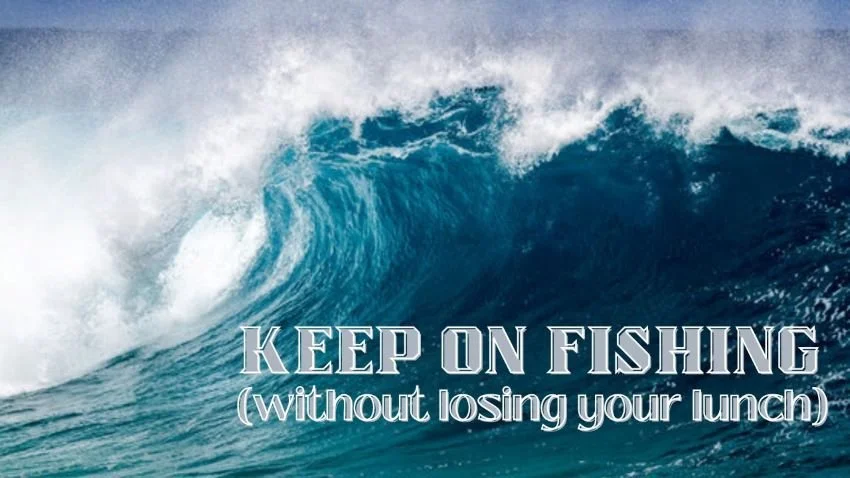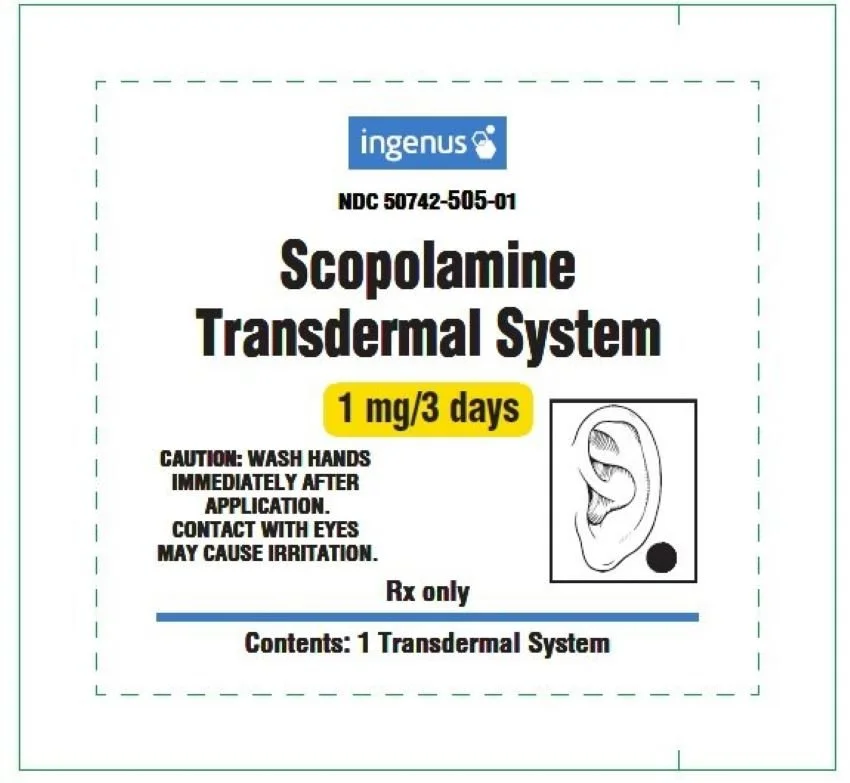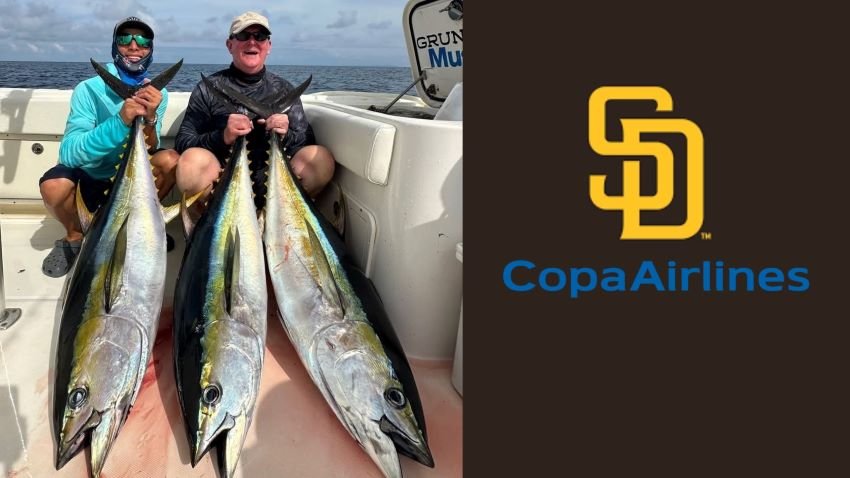Don’t Let Seasickness Limit Your Fishing Opportunities
I always thought that seasickness was something that happened to other people.
As a kid raised in a mostly non-fishing family, every summer my dad and some of his friends would charter a boat on the Chesapeake Bay and take their sons fishing for bluefish. It was a rotating cast of characters with generally high catch rates, but despite the mostly tranquil waters one of the dads never came back after he spent the entirety of the day lying down, nauseous, sick as can be. I figured there was something really wrong with him.
Then, when I started seriously bass fishing in my twenties, it was mostly on smaller bodies of water where motion sickness was unlikely. Nevertheless, the Potomac River can get oceanlike on occasion. On one such day, when the river turned into a washing machine on spin cycle, my friend Harold’s boater tried to avoid the worst of the waves by driving under a suspended pipe close to shore. I don’t know if it was the rough water, or the departing seagulls’ fecal gift to them, but Harold left half of his semi-digested sandwich on the back deck of the boat and the other half in the drink.
Still, it hadn’t happened to me.
But then in 2006, we were in Orlando for the Bassmaster Classic and afterward we joined some friends for a day at Universal Studios, preceded by a hearty breakfast at Bob Evans. Our first ride slowly lofted us up above the park, then after a brief stop we plunged toward the ground on giant rubber bands. Up and down, up and down. My stomach and the rest of me were not in sync. I made it through the ride, but when we got our feet planted on the cement I lost it. My pancakes and extra crispy bacon did not last the walk to the next ride. Some unfortunate minimum wage worker had to clean up my “fun,” although in my defense it probably wasn’t the first time for that.
Meet the Patch
The incident in Orlando wasn’t “seasickness” – it was “motion sickness” – and easily explained away by the particulars of the incident. Nevertheless, I somehow suspected that things might’ve changed. At the very least, I knew that I wanted to get into some offshore fishing, and I also knew that I didn’t want to be sick.
When Keith Combs and I went to Alaska in 2019, we scheduled a 36 hour halibut fishing excursion out of Seward prior to our journey to Bristol Bay. I recalled that when I’d gone halibut fishing (for 8 hours) out of Homer in 1995, it had been rough, and the diesel fumes had been irritating, although not sickness-inducing. I decided that since it might be rough this time around, I’d take some preventative measures – I went to my doctor and got the scopolamine patch for both of us. I don’t recall if Keith wore his, and despite an 80 mile run we didn’t encounter anything more than big rolling swells, but neither of us got sick.
It’s a Recognized Problem
We hear time and again from potential traveling partners that they’d love to join us in Guatemala, Panama or another super-fishy location but that they have occasionally or frequently suffered the ill-effects of motion sickness. No one wants to take precious time and resources to go to some storied place and then not be able to enjoy its promised benefits. My best advice is to start small – go somewhere you might experience the problem, but confine it to a limited cost and a limited period of time. Better yet, try out some of the potential solutions listed below to see if they fit your particular situation.
No one wants to see you miserable. Indeed, while the direct sufferer of the malady is the one with the most to lose, it puts a damper on everyone’s experience when one or more members of the group are suffering. Just don’t let the fear of the possible either make it a self-fulfilling prophecy or preclude you altogether from experiencing something that might be a life-changing experience.
Some Possible Solutions
Because so many people love big water experiences, and because there are so many industries depending on people having a good time at sea, there are numerous products, medications and simple solutions aimed at eliminating or minimizing problems associated with seasickness. One of the best summaries I’ve seen of this written from an angler’s perspective was Louis Cahill’s recent “Beating the Seasick Blues” on the Gink and Gasoline fly fishing website.
There are of course some possible prescription solutions, including the Scopolamine patch, which we’ve used (mostly) successfully. I’ve also seen recommendations for Zofran, a drug used to combat nausea resulting from chemotherapy, but some scholarly studies seem to indicate that it does not work. Either way, consult your physician for his or her opinion, and to ensure that any prescription options don’t have bad interactions with your other medications. I’ve found that the patch dries out my throat, but that seems to be the only persistent side-effect.
Additionally, there are over-the-counter options including the ever-popular Dramamine and Bonine. With all of these remedies, I recommend that you start them substantially before you’ll be on the water so that your body has time to adjust and integrate them into your system. In the limited number of times I’ve tried them, I’ve found that even the “non-drowsy” formulations make me a little tired, so take that into account.
Furthermore, some past sufferers rave about wristbands that help with the sickness, and ginger gum/tablets are said to help some people. As I’ve written in the past, there are even specialized (and admittedly goofy-looking) glasses made to equalize your brain.
Indeed, this affliction is caused largely by your brain, so if you can “re-fool” yourself, you may avoid the problem in the first place. Simply solutions for that may include looking at the horizon and simply saying out loud to yourself that you will not get sick.
The potential to slide into nausea may be catalyzed by other attacks on your senses – try not to go to the bottom of the boat, inhale diesel fumes, or stare intently at a fixed point (like tying a knot) for an extended period of time, or any more than necessary. If your stomach gets queasy, then pretzels or some other acid-absorbing food may calm it down. I find that sometimes a long run in rough water makes me feel a little bit “off,” but if I sip a carbonated beverage upon arrival and then burp, it lets out that pressure. Hey, find a solution that works for you and go with it!
Nothing is Foolproof
When we returned to Panama in November of 2022, the weather was consistently ugly – rainy, with some pretty heavy doses of wind. We were able to fish every day, and caught boat loads of different species – but it didn’t always make sense to go in certain directions. On our second or third day, while on land, I took a nasty fall and hit the back of my head HARD, enough to raise a pretty big welt. I’m not sure if I was concussed, but I suffered a headache. Not enough to prevent me from fishing by any means, but enough to cause some discomfort.
On our last day on the water, we made a long run to a group of islands, planning to fish their protected inshore waters, but needed to plow through some big waves to get there. I reclined in a bean bag, and our captain handled the conditions masterfully, but there were some heavy landings. Even though my head was getting thrust into a soft bean bag, it still hurt every time. I was anxious to get to our destination to stop the pounding, hoping that a stretched string would take the aches away. When we finally did arrive, I was woozy and a bit nauseous. We started to slow troll for roosterfish and I started feeling worse. Eventually I leaned over the side and yakked several times, the first time that had happened to me as the result of motion sickness since 2006. Once it was done, though, it was truly done. I might not have been 100%, but once I had a carbonated beverage to clean out the bacon-and-eggs taste, I was more or less fine for the rest of the day. So I don’t know whether it was run-of-the-mill seasickness, a remnant of my injured head from a few days earlier, a combination of the two or something else altogether, but it taught me a lesson – I need to stay vigilant, but I love fishing too much to let the conditions conquer me. If that’s the worst thing that ever happens to me, I’ll go again and again and again – especially because that’s the day I caught my favorite fish of 2022.
Some Additional Resources
UC Davis Health: Travel and motion sickness: An expert weighs in on Dramamine, ginger and more
The Points Guy: How to avoid seasickness on your next cruise
Travel & Leisure: The 8 Best Motion Sickness Remedies of 2022
Thrillist: How to Stop Seasickness, According to Ocean Explorer Jean-Michel Cousteau
Conde Nast Traveler: The NASA Space Treatment That Will Cure Your Seasickness
The MeatEater: Puking on the Portside: Tactics for Preventing and Treating Seasickness









